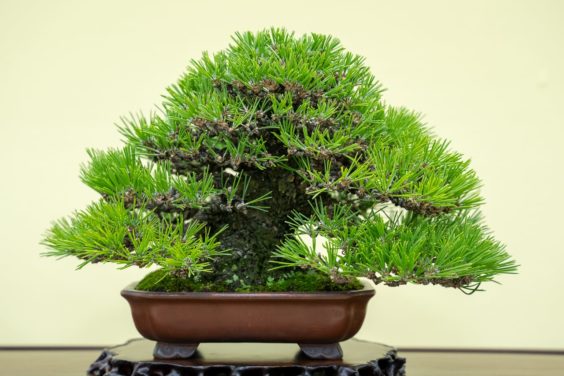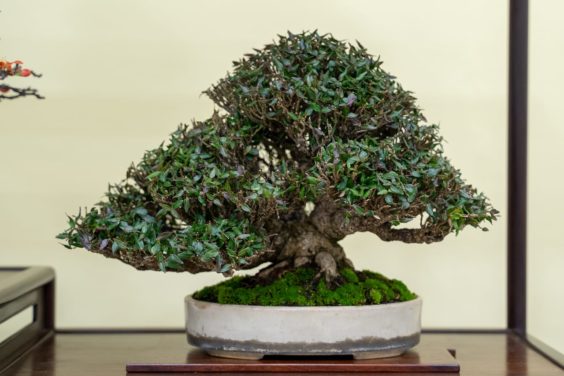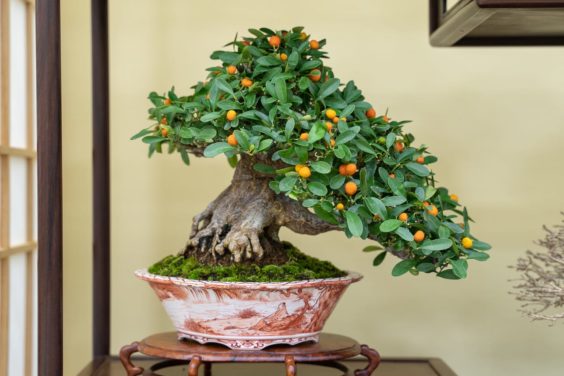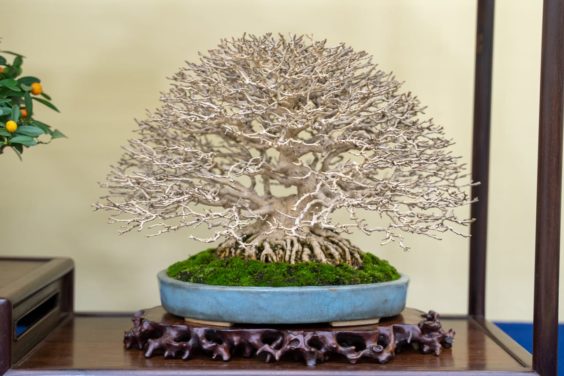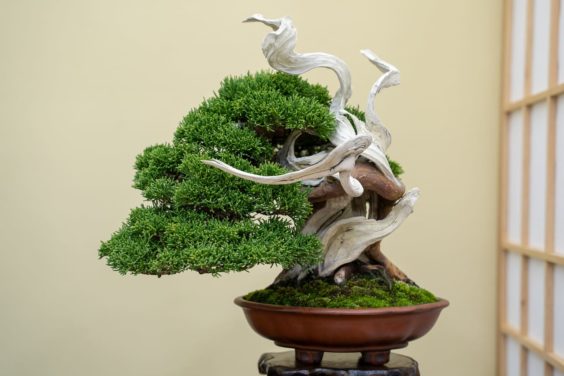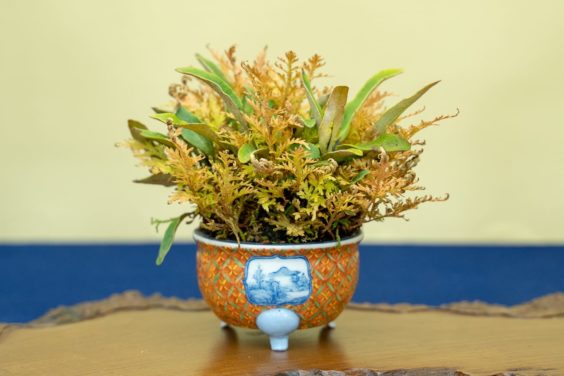One of the first displays to catch my attention at this year’s Gafu-ten exhibit featured six trees and an accent plant.
Award-winning display at the 2019 Gafu-ten held in Kyoto, Japan
Unlike the display of larger bonsai, shohin display entails complex relationships among all of the trees in the composition. As the number of trees in a display increases, the complexity of the display also increases.
A lot of this complexity arises from the convention of providing contrast in a display. Displaying different species together is one of many forms of possible contrast. A list of the most basic forms of contrast in a shohin display might include:
- Different species
- Different styles
- Different pot colors
- Different pot shapes
- Different stands
The arrangement of display elements offers another layer of complexity.
- Aim to display trees that are relatively equivalent in size
- Aim to display each tree at a different level
- Aim to display trees without leaves next to trees with leaves
- Ensure each pair of trees on a shelf point toward each other
- Ensure the top tree and the tree off to one side point toward each other
The display above does a great job meeting each of these criteria. On top of that, each tree is a great example of its species.
Black pine in a tiny unglazed pot
Chojubai with swirling exposed roots
Dwarf jasmine with full silhouette and dense branching
Kinzu full of ripe fruit
Trident maple with incredible branch ramification and interesting roots
Shimpaku with dynamic movement and delicate deadwood
An attractive accent to denote the season – selaginella and pyrrosia
After spending a few minutes studying this display, I reminded myself that I was in a room full of such displays. More highlights from the 2019 Gafu-ten coming up next week.
The post Anatomy of a shohin display appeared first on Bonsai Tonight.


